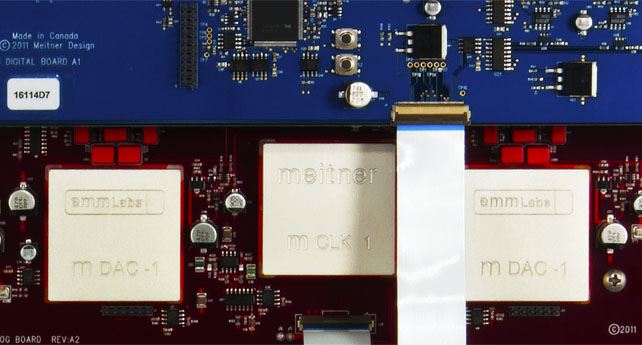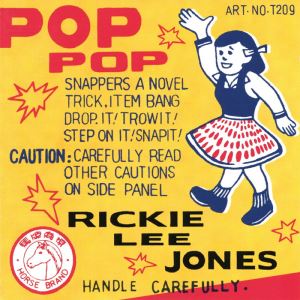
Ed Meitner has been creating audio components for four decades. His early work included professional analog mixing consoles and audiophile components for Museatex and Melior. He is also responsible for the offering the first commercially available cryogenically treated cables. But his work in the digital domain is what gives him legendary status in both the professional and audiophile communities. He worked hand-in-glove with Sony and Phillips in developing the DSD/SACD standard, and in 1998, founded EMM Labs. Although his initial products were destined for the professional realm, where they are both then and now the reference, it wasn’t long before he began focusing on state of the art components for the audiophile market as well. Nevertheless, many of his audiophile products retain professional features, such as ST-optical and SDIF-3 outputs, and are used by professionals in the mixing and mastering process. Ed Meitner has now decided to trickle down the technology in his no-holds-barred EMM Labs designs to a more affordable level; thus the Meitner brand was born.

The Meitner MA-1 DAC, the first such product, comes housed in a 17” wide by 3.6” high by 15.6” deep, 16 pound, bent metal chassis with an attractive aluminum faceplate. All of the front panel controls are symmetrically laid out in the center, with the exception of the standby switch to the left. There are six round buttons to select among the six inputs – AES/EBU, two coaxial S/PDIF, two Toslink, and USB, above which are input selection indicator lights. Below the buttons are six sample rate indicator lights for 44.1kHz, 48kHz, 88.2 kHz, 96 kHz, 176.4 kHz and 192 kHz, and, centered, the IR receiver for the credit card remote. Around back are the corresponding input jacks, both balanced and unbalanced outputs, an RS232 port for wired remote control, a USB service port for future upgrades, a reset switch, and a combination IEC power inlet and recessed power switch. I really like the simple, clean, and unambiguous design and markings of both the front and rear panels.

Inside, the Meitner MA-1 DAC is bristling with an alphabet soup of proprietary technology, including MFAST, MDAT, MDAC and MCLK. MFAST (Meitner Frequency Acquisition System), an asynchronous technology which is implemented not only for its XMOS XS1-L1 based USB input, but across all inputs, decouples the input from the output by buffering (non-PLL) and then striping out incoming jitter. MDAT (Meitner Digital Audio Translator) then takes the input, at its native word length and sample rate, and upsamples it to double-rate DSD aka DSD128 (5.6448MHz). MCLK and MDAT are proprietary hardware implementations of high-purity sub-picosecond jitter, nanotechnology-based (not crystal) master clocks, and 1-bit dual-differential discrete digital to analog converters, respectively. The MDAT modules are the only true 1-bit DACs in existence today. The acronyms can be a bit confusing, but the results are anything but. This is the same technology present in the MA-1’s costlier EMM Labs counterparts.
Although each MA-1 receives 100 hours of burn-in time prior to shipment, Shanin Al Rashid, EMM Labs’ Director of Sales, cautioned me that I would need to burn it in for another 150 hours before it achieved its best performance. One hundred fifty hours is 6 days, 24/7. In no hurry, I simply let it play overnight at low volume for a couple of weeks before conducting any listening tests. I am pretty sure the MA-1 was tired of decoding Beethoven’s complete piano sonatas by the time run-in was accomplished.
Set up was straight-forward. The only hiccup I encountered was that neither my Mac Mini nor the Audirvana Plus playback software I use could initially see the Meitner MA-1. A quick reboot of my Mac Mini resolved the issue. After that it was smooth sailing. I put it though its preliminary paces to verify that it would decode the various word lengths and sampling rates. I have a playlist of audio files from 16/44.1 to 24/192, and the MA-1 played each of them in turn without hesitation. Unlike the dCS Debussy, whose relays softly click when the sampling rate changes, the Meitner MA-1 is completely silent.
In addition to decoding PCM at up to 192/24, Meitner has recently released an update to the MA-1 which enables playback of DSD audio files using the new DSD over PCM (“DoP”) standard. When DSD is engaged, both the 176.4kHz and 192kHz indicator LEDs are lit. I am fortunate to have a fairly good selection of DSD files at my disposal. Meitner’s implementation of DoP simply works. Select a DSD audio file from Audirvana Plus or your DSD-capable audio playback software of choice, and DSD is immediately recognized and playback begins. No hesitation, no fuss and no bother. As it should be; Ed Meitner was among the small coterie of audio engineers responsible for the development of the DoP protocol.

Starting off with the DSD version of Doug MacLeod’s 2000 blues blockbuster Whose Truth, Whose Lies, one immediately notices that the album has dramatic dynamic range. The first hint is that you have to turn the volume control up six or eight notches to get to a normal level. And then there is the detail. Take, for example, Plaquemine. Doug MacLeod plays a very unusual style National Reso-Phonic Tricone resonator guitar using his right hand fingernails for strumming, which gives the string tone a very bright, metallic, dynamic sound, with astounding transients, which are phenomenally captured by the MA-1. It is clean as a whistle. Well balanced, his baritone voice is anything but metallic, however, having a rich, deep resonance, fine and mellow. The following track, Splain It to Me, adds bass, drums and tambourine, and features James Harmon on harmonica, which is miked distantly, not next to the harmonica, which gives it a purity of tone without all the breathy noise. This cut sounds as if it were recorded in a much larger venue with ambient cues adding to the spaciousness. The drummer occasionally clacks his wooden drumsticks together with a realistic snap. In Norfolk County Line, the drummer sets aside his drumsticks for brushes on snare. On some less resolving systems, brushes sound like white noise. Not here, as the brushes have that distinctive metal on skin sound. It’s as if you can hear the individual tines brushing against the drum head. On the classic St. Louis on My Mind, the tambourine is startling, with the metal jingles as realistic as I have heard them. The electric guitar has a smooth, tubey sound, with a slight distortion as its amp is driven hard. Returning to an all acoustic number, You Can’t Give Me Nothin’, the rhythm guitar is strummed with the thumb, giving it a padded sound. MacLeod takes a lead with pick on strings, juxtaposing the sharp attack with the dull. The whole album is a palette of different sounds, which the MA-1 distinguishes with unparalleled accuracy.

The first time I heard Rickie Lee Jones’s album Pop Pop was at Goodwin’s High End in Boston. I had gone there to audition the Magico V3 loudspeakers, then the hottest thing on the review circuit, and while I was waiting for my turn in the main listening room, I thought I would check out the then new Verity Finn loudspeakers. I was impressed by both Rickie Lee Jones’s voice and the way it was reproduced on the Finns, and I picked up a copy of the CD when I got back home. The first cut, My One and Only Love, betrays that the album is a studio multi-track recording. The nylon string guitar is a larger than life, with the transient response of the finger-picked strings blunted – as it should be. But it has a marvelous ringing tone, with plenty of string squeak as the guitarist’s hand slides up the neck. Not detail is glossed over. The bass is subdued, but authoritative, hitting you with articulate puffballs to keep time. A bandoneon (!) emerges from behind the bass, adding depth to the soundstage, and giving the song a French cafe kind of kitsch. Rickie Lee Jones’s voice takes a little getting use to. Let’s be honest, she sounds like she’s had one too many cocktails, slurring her words in an endearing sort of way. Thankfully, there is no sibilance. Up from the Skies has a driving bass beat that really gets your toe tapping. You can hear the slap of the close-miked strings. What is great is that you can really turn up the volume, and you are given what amounts to a live performance from the front row. Everything holds together and simply becomes larger. The clarinet in I’ll Be Seeing You is especially engaging, with a breathy and lush tone. The popular standard Bye, Bye Blackbird features a wonderfully reproduced glowing saxophone. The final cut, Comin’ Back to Me, stands apart with Rickie Lee Jones enunciating clearly with an electrified steel-string acoustic guitar in the background, both of which are rendered exceptionally cleanly. The album is a testament to a warm, but not tubey, and coherent midrange.

I also connected the MA-1 to the S/PDIF output of my Meridian G08 CD player to listen to a classical orchestral work, selecting Mozart’s Symphony No. 38 in D, “Prague”, K. 504, with John Eliot Gardener conducting the English Baroque Soloists on period instruments. The first movement begins with an adagio section. The imaging, while not pinpoint, did lay out the sections of the orchestra nicely. The strings, punctuated by fortissimo, but not blaring, horns, set the initial somber tone. The pace gradually picks up as themes are introduced and the scoring becomes more dense. The cellos and double basses on the right, supported by tympani on the left, provide an underlayment over which the violins glide and to which the horns and woodwinds respond. There is only the slightest bit of glare as the violins are vigorously bowed. Though the potential for congestion is omnipresent with the orchestra playing at full tilt, the MA-1 sorts everything out, allowing you to easily follow the separate lines, which are ultimately resolved. The second movement tempo is marked andante con moto, a slower pace than the spirited allegro closing the first movement. The emphasis of this movement is on the first violins, supported by the cellos, juxtaposed against the woodwinds. The violins, somewhat distantly presented, are played lyrically, and have a smooth sound with a nice sheen to them. The clarinets and oboes are easily distinguished even in a sea of instruments. The final presto movement leaps along, with the horns rejoining the color palette and the flutes providing punctuation. Overall, the soundstage is quite wide, though somewhat shallow, an attribute of the recording rather than the MA-1. Comparing the CD over S/PDIF to its ripped counterpart over USB, I was hard pressed to detect any differences. Use whichever input is most convenient for you with the knowledge that you are not sacrificing quality either way.
Comparison
I also had the dCS Debussy in my system at the same time as the Meitner MA-1. Feature-wise they are comparable. Each does PCM up to 24/192 and DSD. The MA-1 omits a choice of digital reconstruction filters and a second AES/EBU input, but includes a pair of Toslink digital inputs. The Debussy offers volume control, but costs half again as much. Sound-wise, they are different, not dramatically so, but different. Would you expect otherwise? They employ different technologies. The MA-1 uses proprietary true 1-bit DACs and upsamples to 5.6448MHz. The Debussy uses a proprietary 5-bit RingDAC and upsamples to 2.8824MHz or 3.072Mhz. They each use their own unique digital reconstruction filters. They each have different power supplies and analog output stages. The Debussy excels at low-level detail retrieval, transparency, and soundstaging. String tone is exemplary. The MA-1 excels at coherence, smoothness, and rhythm and pace. Dynamics are exciting. Both have noteworthy low-frequency articulation and high-frequency extension. Both are eminently musical. Which one is best? Since they sound different, declaring one best is too simplistic. Which one is best for you depends on synergy with the other components in your system, and perhaps more importantly, your musical sensibilities. In other words, aesthetic considerations. An investment of this magnitude demands a personal audition. Though you may prefer one over the other, I seriously doubt you would be unhappy with either.
Conclusion
The Meitner MA-1 is a remarkable DAC. Offering the full panoply of inputs, and processing at word lengths and sample rates up to 24/192 and DSD, it is all the DAC you are ever likely to need, and, given its virtually faultless performance, is all the DAC you are ever likely to want. The only significant short-coming I could find with the MA-1 is its lack of volume control, thus necessitating the use of an analog preamplifier. But then you probably already have one in your system now. Seek out the Meitner MA-1 for an audition. You will be well rewarded.
- Frank Berryman
Contacts
EMM Labs, Inc.
119-5065 13th Street S.E.
Calgary, Alberta, Canada T2G 5M8
Telephone: (403) 225-4161
Fax: (403) 225-2330
www.emmlabs.com
[email protected]
Associated Equipment
Analog Source: VPI Scout; Dynavector 20X2; Musical Surroundings Phonomena II
Digital Sources: Meridian G08; Mac Mini; dCS Debussy; Audirvana Plus
Preamplifier: Meridian G02
Power Amplifier: Meridian 557
Loudspeakers: Magnepan 1.7
Analog Cables: Kimber Select KS1016 and KS1116
Digital Cables: Kimber Select KS2020 and KS2416 USB
Speaker Cables: Kimber Select KS6063 and KS9033
Power Cables: Kimber PK10G and PK14G
Headphones: Etymotic ER-4S
Accessories: Audience aR2p power conditioner


